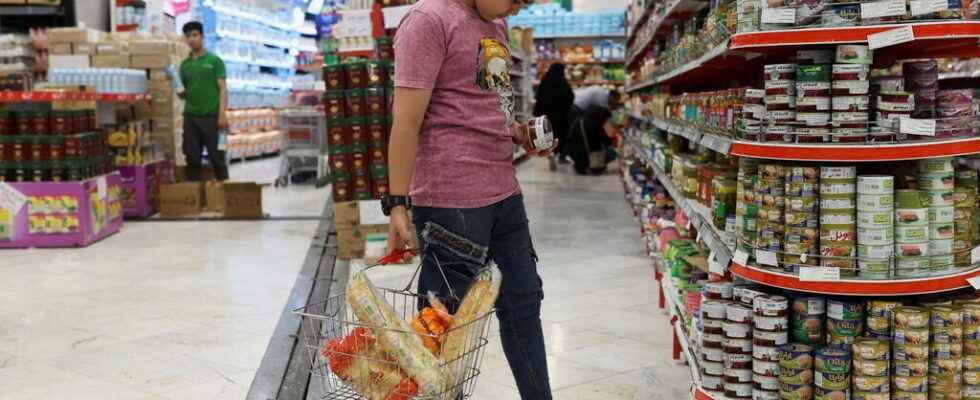For almost a week now, a movement of sometimes violent demonstrations has been developing in Iran, mainly in the south of the country. They come after the government’s decision to considerably increase the price of certain products such as bread, oil or meat.
The Iranian government announced, Monday, May 9, a series of economy measures, including the lifting of subsidies on flour and the increase in the prices of certain foodstuffs such as oil and dairy products. After this decision, hundreds of people demonstrated across the country. The government announcement also prompted a rush to supermarkets to stock up on produce, according to videos shared on social media and images broadcast by state television.
► To read also: Iran: drastic increase in the price of pasta and flour for industrial bread manufacturers
According to the reformist newspaper Shargh, dozens of bus drivers went on strike Monday, May 16 in Tehran to denounce the non-respect of a decision of the Higher Employment Council, demanding a 10% increase in wages. They chanted slogans hostile to the mayor of Tehran, Alireza Zakani, accusing him of incompetence and calling for his resignation. Some of them were arrested on Tuesday.
The previous Saturday, a person had been killed during a demonstration, according to Ahmad Avaï, an Iranian deputy close to union circles. On the same day, in Izeh, Khuzestan province, people attacked shops and set fire to a mosque. The imam of the great prayer in this city denounced “ insults against Islam and the Quran launched during the demonstrations. The deputy of Izeh, Abdollah Izadpanah, indicated that three young people had been arrested for having threw stones at a mosque “.
A movement that comes from afar
In recent years, many protests have taken place in Iran demanding better living conditions, including in November 2019 after a rise in fuel prices.
For Thomas Coville, researcher at the Institute of International and Strategic Relations (Iris), specialist in Iran, this new movement is therefore to be placed in a broader context and expresses a fed up beyond the increase in food prices.
” It’s comparable [au mouvement de] 2019 in the sense that there is an economic and social crisis in Iran that started since 2018 with Trump’s exit from the agreement [sur le] nuclear power and the establishment of an American policy of maximum pressure, analyzes the researcher. It should be noted, Joe Biden did not return to it. So Iran still exports very little oil. Inflation in Iran has risen since 2018 to 40%. For food products at the start of 2022, we reach a 60% increase for bread and cereals. There is an explosive economic and social climate. Teachers have been protesting for months because the entire middle class in Iran fears falling into poverty. And in this explosive social climate, the Iranian government has decided to remove subsidies on all products: oil, bread, meat and milk. It’s the drop of water that makes the vase overflow. So it’s really a cry of anger. People can’t take it anymore. »
In 2019, 230 people were killed in protest-related violence, authorities said. Experts working for the UN evoke a death toll of 400.
(with AFP)
